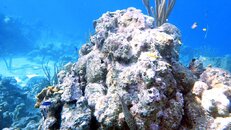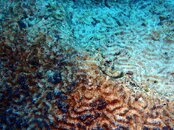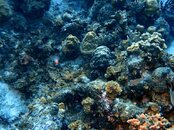Sad to say…the reefs of Bonaire are dead. Currently in Bonaire—last here 5 years ago. The change is dramatic, in a bad and sad way. We dove Klein Bonaire, Salt Pier, and a house reef. All in terrible condition. Dead reef everywhere. If I had know this in Nov 2023 when I prepared my trip, I would have canceled. I think the Caribbean is doomed due to SCTLD and climate change. Only two green dive sites at the Southern tip. All others are orange and red. Cozumel and the East end of Cayman are better than Bonaire.
Trying Karpata, 1,000 Steps, and more boat dives off of Klein Bonaire tomorrow. I am hoping to be pleasantly surprised, but not counting on it.
My recommendation: cancel if you have plans to dive Bonaire (and can still cancel). Sad situation. Don’t believe it if you hear that the reefs are nice. Ask for photos.






